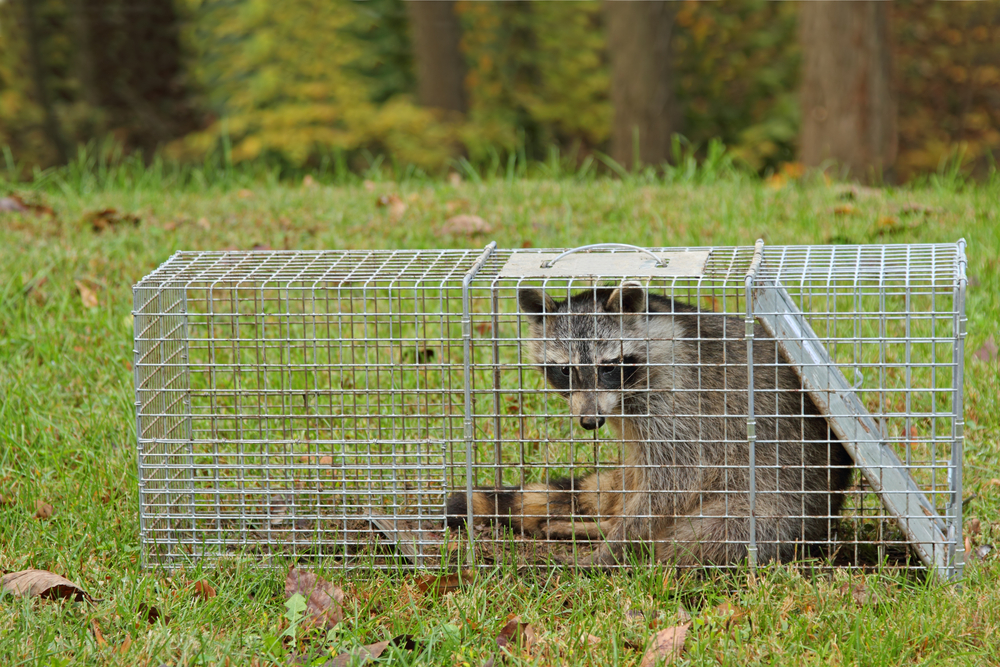Animal trapping has been used to provide food and fur to humans for thousands of years. When you’re lost in the wilderness or living off-grid and need access to these, give the modern trapping techniques a try.
Modern Trapping Techniques That Don’t Disappoint
There are five basic kinds of traps, including body-gripping traps, snares, foothold traps, cages, and glue traps. Each provides different benefits and different detractors, especially in regard to the size of the animal that you seek to trap. Trapping can be used effectively for animals ranging from mice to bears.
These days, trapping is used for survival, money for pelts, and animal control. Sport trapping is heavily regulated in most states, with laws varying significantly across the country.
If you are interested in sport trapping, you will want to be certain that you are following all local laws and seasons, and have purchased any necessary licenses. You will also want to check your traps at least once a day, even if not specified by law.
Trapping is typically used to catch animals with fur, and one benefit is that the trapper does not have to be present when catching the animal. For large and dangerous prey, this is much safer for the trapper. However, trapping can cause severe mental and physical anguish to animals, so much so that some states have prohibited the use of certain types of traps.
Animals have even been known to gnaw off their legs to escape traps. You’ll want to do your research to choose the right trap for the animal you hope to catch, and based on your intentions for it once you’ve caught it.
Types of Traps
1. Body Gripping Traps
Also known as Conibear traps, body-gripping traps are single or double spring traps intended to kill animals almost instantly. They are extremely versatile, able to be used horizontally, vertically, on land, and underwater. They are also extremely dangerous to set, and you will want to use tremendous caution as well as setting tongs and safety clips.
These traps will last for years and can be used to trap a wide variety of animals. These traps will also catch and kill dogs and cats, so be certain you are not setting them where hunting dogs or pets may accidentally be killed.
Used for: muskrat, mink, skunk, raccoon, opossum, beaver, otter
2. Snares
Snares create a noose that closes around an animal’s body or neck, and while very effective, is also considered cruel. They are illegal or regulated in many parts of the world, although modifications can limit the distress the animal experiences.
Snares are most often used for capture and control of animal overpopulations, and for food collection. Snares are accepted as frequently capturing non-target prey.
Used for: rabbits, squirrels, coyotes, foxes, wolves
3. Foothold Traps
View this post on InstagramThe Trapper- Last of a Dying Breed. Folks say its evil to trap an animal…. I say it’s evil to just standby and let em eat my chickens while they are still alive…. #Trapping #OGOB #Coyote #footholdtrap #TrappingIsConservation #SaveTheChickens #SaveTheFawns
Foothold traps are illegal in some states, as they have been targeted as especially cruel. Animals caught in a foothold trap will frequently chew off their legs to escape. However, they are extremely inexpensive and effective. Modern, slightly more expensive foothold traps have been deemed to be more humane, holding the animal without harming them.
Used for: beavers, coyotes, raccoons, foxes
4. Cages

Cage traps use bait to catch and contain live animals. They are considered the most humane option and are often used to relocate nuisance animals. Cage traps are very bulky and expensive, making it difficult to set many of them or to set them in remote areas.
Once the animal enters the cage, a trigger causes the door or doors to close and lock, trapping the animal inside. They are available in many sizes.
Used for: squirrels, muskrats, birds, raccoons, rabbits, groundhogs, skunks, opossums, feral cats, even crocodiles
5. Glue Traps

Glue traps are only effective for pest control inside; outside elements like moisture and dust render the adhesive useless in a short amount of time. They can be used with bait or without placing the trap in the vicinity of the animal and are generally considered cruel. Domesticated pets often get stuck in glue traps but can be gently released.
Used for: rodents, birds, snakes, and lizards
Trapping pits and deadfall traps can also be fashioned without purchasing an actual trap, but modern trapping refers to the five basic trap types. Trapping is a controversial activity, and if you partake you will want to follow best practices and be an ethical hunter.
Have you tried trapping? What is your preferred modern trapping technique? We’d love to hear from you in the comments section!
Up Next:
- The Pencil Snare: Trap For Your Life (Part 7) [WITH PICS]
- 5 Sneaky Survival Snare Traps To Keep You Alive | Primitive Trapping
- 8 Unusual Booby Traps To Protect Your Home


